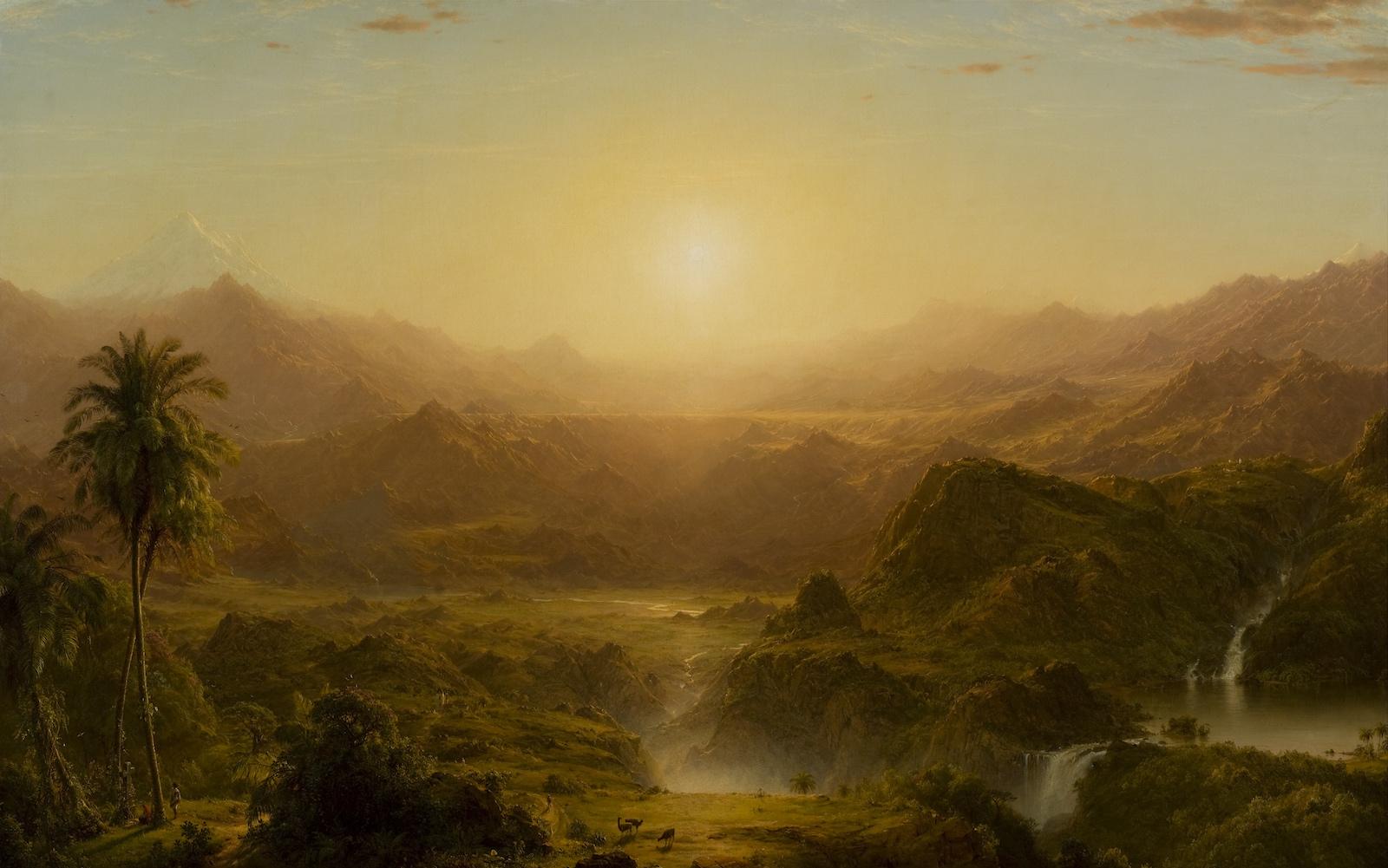Working in New York State, Church felt viscerally gripped by the writings of Alexander von Humboldt, the German academic and scientist who had traversed South America and researched the human connection to nature. Humboldt believed, as did Church, that regardless of one’s spiritual or religious beliefs, the study of science and nature were not incompatible with Christianity or Judaism.
As a scientist, Humboldt “was exhorting landscape painters to go to South America and paint what he perceived as this very kind of pristine, unspoiled kind of landscape,” Allison Slaby, Curator at the Reynolda House Museum of American Art, which owns Andes.
At the time, Andes was the largest painting that Church had created. In painting Andes, notes Slaby, the artist succeeded in “uniting both the macro and micro” of nature and spirituality, bringing into concert the natural and the supernatural, whatever the latter might mean to the individual viewer. “It was really a breakthrough for Church,” she notes.
Church would go on to create Niagara (1857), a view of the iconic Niagara Falls owned by the National Gallery of Art in Washington, D.C.
Science and art history are not at odds with each other as many may think, left or right, liberal or conservative.
As the poet Rainer Maria Rilke noted “I live my life in ever-widening circles that stretch themselves out.”
Search in Church’s paintings and those circles will be found.
























![DEl Kathryn Barton [Australian b. 1972] the more than human love , 2025 Acrylic on French linen 78 3/4 x 137 3/4 inches 200 x 350 cm Framed dimensions: 79 7/8 x 139 inches 203 x 353 cm](/sites/default/files/styles/image_5_column/public/ab15211bartonthe-more-human-lovelg.jpg?itok=wW_Qrve3)



